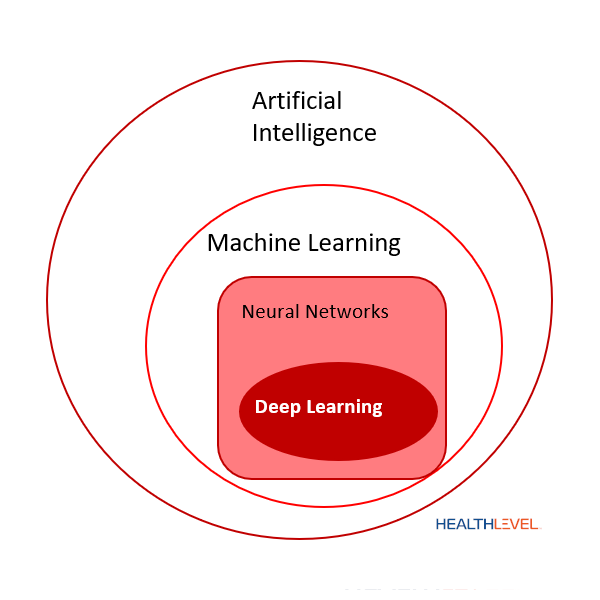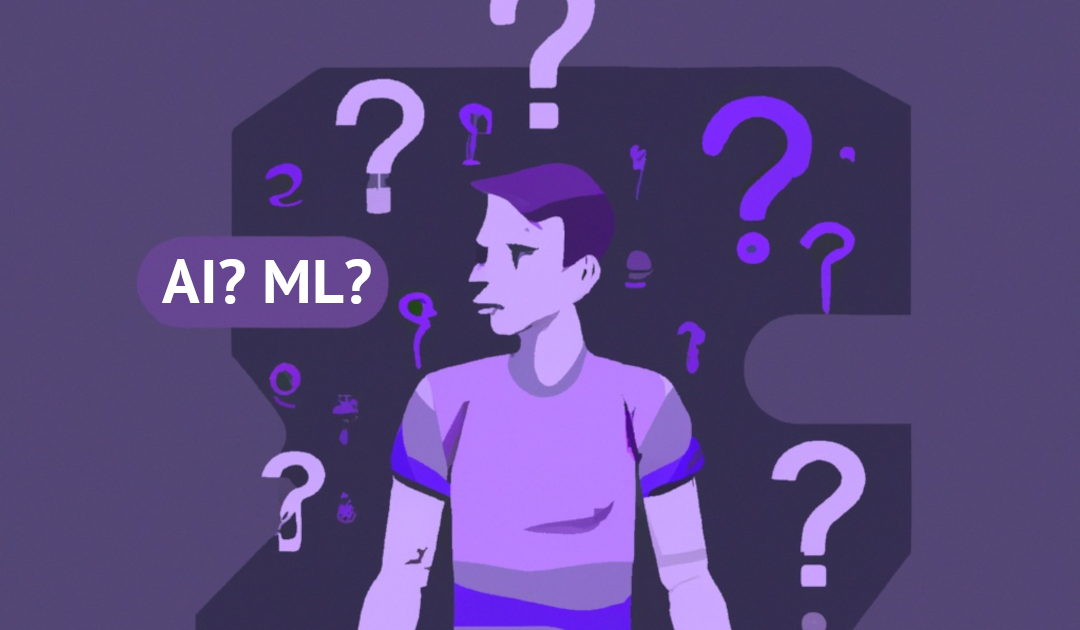You may have heard words like “artificial intelligence (AI)”, “machine learning (ML)”, and “predictive analytics”. They’re used more often in everyday language, inside and outside of the workplace. But what exactly do they mean? Trying to decipher these words can be especially confusing when they’re used interchangeably, leading to more questions like, “Is AI the same as ML?” and “What exactly is each of their purposes?” Below, we provide a starting point to help you better understand what each of these terms mean and how they’re being used as tools in modern healthcare businesses.
Artificial Intelligence
At the top of the vocabulary hierarchy is “artificial intelligence”. This refers to a way of programming machines to think intelligently, like humans. While not quite “sentient”, AI-powered machines make decisions or recommendations based on data available to them, with little to no human intervention. Within a business operations platform, AI can be used to identify more efficient workflows or scenarios for resource management. AI then improves its ability to make better decisions by 1) learning from new data or 2) using a set of programmed rules based on external sensors (e.g., temperature sensors, data sensors, etc.). In short, when someone says “AI”, they’re referring to non-sentient software that can make human-like decisions.

Machine Learning
Machine learning is a subset of AI. Where AI is the entire field of creating an artificial intelligence, machine learning is the part of AI focused on processing data. Like humans learn through repetition (i.e., practice), machine learning algorithms comb through lots of data to identify and learn from patterns that repeat. Such patterns can then be used to summarize, classify, and provide predictions about future behaviors. “Deep learning” is a machine learning technique, which is used on large amounts of dense data. For example, healthcare systems can use deep learning for pixel AI to help diagnose diseases or make predictions about patient health risks. Within a business operations platform, machine learning can help identify patterns related to operational workflows, resource usage, or performance to make patient care more efficient, timely, and effective. So, when you hear someone use terms like “classification”, “clustering”, “neural networks”, and “decisions trees”, they’re talking about techniques used in machine learning to extract insights from data.
Predictive Analytics
Predictive analytics is the use of machine learning techniques (and statistics) to forecast future scenarios. It’s particularly useful for solving problems with a time component. In radiology business, predictive analytics helps with schedule management by forecasting future capacity needs through patterns from past events. More advanced predictive models are prescriptive (e.g., what action should be taken) and personalized (e.g., what action should be taken for a particular user.) A business operations platform can utilize both by providing actionable insights to 1) the entire organization and 2) the individual user so that they can make informed decisions about staff planning and resource usage.

Put Powerful, Modern Tools to Work for You
To summarize, artificial intelligence (AI) refers to machines that can make human-like decisions, machine learning (ML) is a subset of AI that focuses on processing data patterns, and predictive analytics is the forecasting of future scenarios by using ML techniques and statistics. When used within a business operations platform for radiology or healthcare, they’re powerful tools for optimizing operating efficiency, whether for staff planning or resource usage; this ultimately benefits patients by improving their quality of care. The entire artificial intelligence discipline has a deep history (e.g., it started in the 1950s), and it continues to evolve today. Below, we’ve included a few more resources, in case you’d like to learn more:
• “Artificial Intelligence” – Stanford Encyclopedia of Philosophy:
https://plato.stanford.edu/entries/artificial-intelligence/
• “The Discipline of Machine Learning” by Tom M. Mitchell:
http://www.cs.cmu.edu/~tom/pubs/MachineLearning.pdf
HealthLevel is the creator of Foundations™, a radiology business operations platform. By combining financial, clinical, and operational data, it uses analytics to paint a complete picture of a business’s operations. It engages every team member to confidently take actions that improve productivity and increase the bottom line. Learn more.
Want to Learn More? Contact Us.



Recent Comments